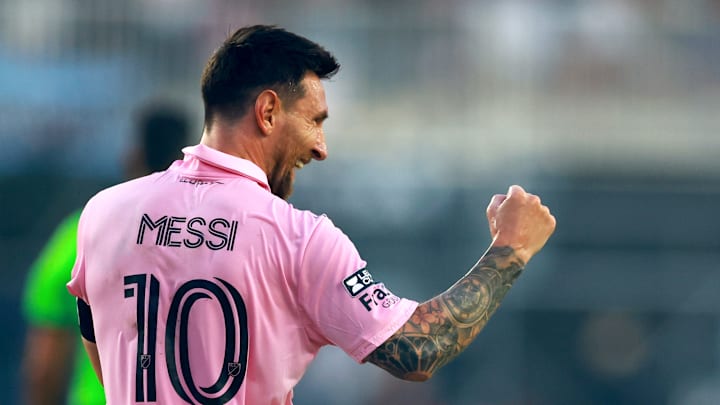Welp, it was a pretty solid transfer season for Inter Miami, if I do say so myself.
I mean, we added Lionel Messi, Sergio Busquets, Jordi Alba and a host of new, young talent to the mix that should set the Herons up for success now and in the future.
Now that it is all done and dusted (I’ve always wanted a reason to say that), it’s a good time to see just how the roster classifications shake out.
Let’s get into it.
A Primer on the MLS Player Class System
The only real complication when it comes to Major League Soccer is the different classifications it has for players on a roster.
There are two different main classifications: senior and supplemental. Within those classifications, there are slots for senior minimum salary and reserve minimum salary players.
Then, you have designated players and two classifications of young designated players.

This is followed by international players, U22 Initiative players, homegrown and Generation Adidas players.
Confused yet?
Yeah, I know. In European soccer, you have local and international players… and that’s about it.
Leave it to MLS to complicate things.
Now, there are rules within each classification, but I’m not going to get into that.
Let’s break down the roster and where each player falls.
Inter Miami’s Senior Roster
By rule, the senior, or active, roster has no more than 30 players. The first 20 players count against a team’s salary budget. Slots 22-24 are senior minimum salary players while Slots 25-28 are reserve minimum salary players. Then, Slots 29 and 30 must be filled with homegrown players.
Then, you have international players. By MLS rules, there are 233 international slots divided among the teams. Some teams have eight or more, some have less. These slots can be traded each season.

Inter Miami has three designated players — Messi, Busquets and Gregore. Both Busquets and Messi are also considered international players.
Some confusion comes here because Leonardo Campana is also a designated player, but he is considered a Young Designated Player, which is different from the three I mentioned before.

MLS has three classifications of designated players: standard (which each team gets up to three), Young (U23) for players aged 21-23 and Young (U20) for players under 20. Campana is a U20 designated player.
Now, besides Messi and Busquets, Inter Miami’s other international players are Alba, Dixon Arroyo, Tomas Aviles (new signing), Facundo Farias (new signing), Diego Gomez (new signing), Corentin Jean (injured), Sergii Kryvtsov, Jean Mota, Franco Negri (injured) and Nicolas Stefanelli.
Supplemental Slots for Inter Miami
Slots 21-24 are senior minimum salary players and can include homegrown and Generation Adidas players. These players can be acquired using General Allocation Money or discretionary amounts of Targeted Allocation Money.
These slots are taken by: CJ dos Santos, Benjamin Cremaschi (homegrown), Harvey Neville and Robbie Robinson.

Slots 25-28 are players earning reserve minimum salaries — which can also include GAM and TAM dollars.
For Inter Miami, those players are: Shanyder Borgelin, Cole Jensen, David Ruiz and Ryan Sailor. Jake LaCava also occupies one of the slots, but he has been loaned out.
Finally, Slots 29 and 30 must be filled with homegrown or Generation Adidas players. Drake Callender, Edison Azcona and Noah Allen have these spots. All three are considered homegrown players.
Now, MLS rules state a team can have a max of two players in those slots, so I’m not sure why they have three.
The rest of the senior roster is made up of players who aren’t international, designed players or taking up any of the special slots on the squad.
So, there you have it. The breakdown of the new Inter Miami squad.
